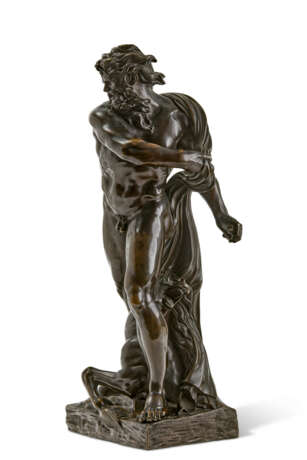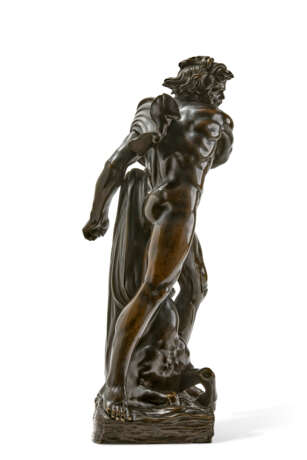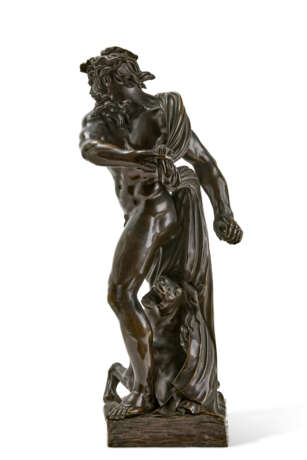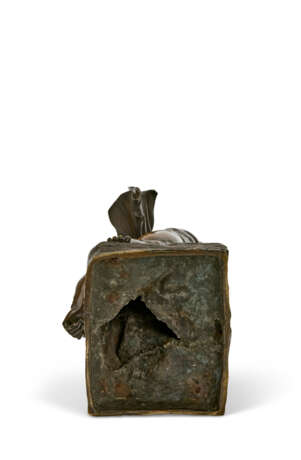ATELIER OU SUIVEUR DE MICHEL ANGUIER (1612-1686), FIN DU XVIIE OU XVIIIE SIÈCLE
11.12.2025 00:00UTC +00:00
Classic
Чтобы сделать ставку, перейдите на сайт
CHRISTIE'S| Auctioneer | CHRISTIE'S |
|---|---|
| Место проведения | Великобритания, London |
| Комиссия | see on Website% |
ID 1514256
Лот 63 | ATELIER OU SUIVEUR DE MICHEL ANGUIER (1612-1686), FIN DU XVIIE OU XVIIIE SIÈCLE
Оценочная стоимость
40000EUR € 40 000 – 60 000
Neptune
bronze
H. 52,5 cm. (20 ¾ in.)
Literature
Bibliographie comparative :
G. Guillet de Saint-Georges, 1682, dans Mémoires inédits sur la Vie et les ouvrages des membres de l’Académie royale de peinture et de sculpture, publiés d’après les manuscrits conservés à l’Ecole impériale des Beaux-Arts, t. I, (éd. L. Dussieux, et E. Soulié), 1854, p. 438.
The French bronze 1500 to 1800, cat. exp. New York, 1968, cat. 21 A, B.
I. Wardropper, « Michel Anguier's Series of Bronze Gods and Goddesses: A Re-Examination », in. Marsyas, n°18, 1976, pp. 23-36.
G. Bresc-Bautier et G. Scherf, Bronzes français de la Renaissance au Siècle des lumières, cat. exp. Louvre, Paris, 2008, p. 208-209, cat. 56.
Further details
A BRONZE FIGURE OF NEPTUNE, WORKSHOP OR FOLLOWER OF MICHEL ANGUIER (1612-1686), LATE 17TH OR 18TH CENTURY
This dramatic bronze figure is part of a series of seven bronze gods and goddesses, originally modeled by Michel Anguier in 1652. As Ian Wardropper has pointed out (I. Wardropper, 1976, pp. 23–36), the first mention of this series appears in Anguier’s biography presented to the French Royal Academy of Painting and Sculpture in 1690 by Guillet de Saint-Georges, where Neptune is listed alongside Jupiter, Juno, Amphitrite, Pluto, and Mars.
The figure of Neptune is depicted following the iconological convention described in Ripa’s Iconologia - standing above a sea-horse and holding his emblem of power, the trident. Wardropper further notes that this agitated Neptune draws inspiration from the Quos ego passage in Virgil’s Aeneid, in which Neptune calms the storm threatening the Trojan fleet.
Taken as a series, Anguier’s group recalls both the now-lost silver casts of Giambologna’s Labors of Hercules, commissioned for the Tribune of the Uffizi in 1576, and the eight bronze gods and goddesses from the studiolo of Francesco I in Florence, executed by various artists between 1572 and 1576.
Anguier’s impetus to produce a series of small-scale bronze figures likely stems from his experience in Rome, where he first worked in the studio of Alessandro Algardi, and briefly in that of Bernini. During his time with Algardi, he likely observed the commercial potential of bronze statuettes - such as the firedogs commissioned from Algardi by Philip IV of Spain, via Velázquez, in 1650. Upon returning to Paris in 1651, Anguier appears to have followed this model, seeking to capitalize on their brief Roman collaboration.
A certain enthusiasm for the series created by Anguier is evident in French circles of the 17th and 18th centuries, made possible by the variety of representations and the production of copies of varying quality. Among these models, subtle differences can be noted in the casting and finishing, including the naturalistic bases, hairstyles, and drapery. Other statuettes of Neptune have been published, notably one donated by Benjamin Altman to the Metropolitan Museum of Art in 1913 (inv. 14.40.691), one at the Victoria & Albert Museum in London (inv. A.206-1946), and another exhibited in The French Bronze: 1500 to 1800 exhibition in 1968.
| Техника исполнения: | Металлоконструкция |
|---|---|
| Материал: | Бронза |
| Жанр: | Мифологическая живопись |
| Место происхождения: | Западная Европа, Франция, Европа |
| Категория аукционного дома: | Все остальные типы объектов, Скульптуры, статуи и фигуры, Статуэтки |
| Техника исполнения: | Металлоконструкция |
|---|---|
| Материал: | Бронза |
| Жанр: | Мифологическая живопись |
| Место происхождения: | Западная Европа, Франция, Европа |
| Категория аукционного дома: | Все остальные типы объектов, Скульптуры, статуи и фигуры, Статуэтки |
| Адрес торгов |
CHRISTIE'S 8 King Street, St. James's SW1Y 6QT London Великобритания | |
|---|---|---|
| Предосмотр |
| |
| Телефон | +44 (0)20 7839 9060 | |
| Комиссия | see on Website | |
| Условия использования | Условия использования |











